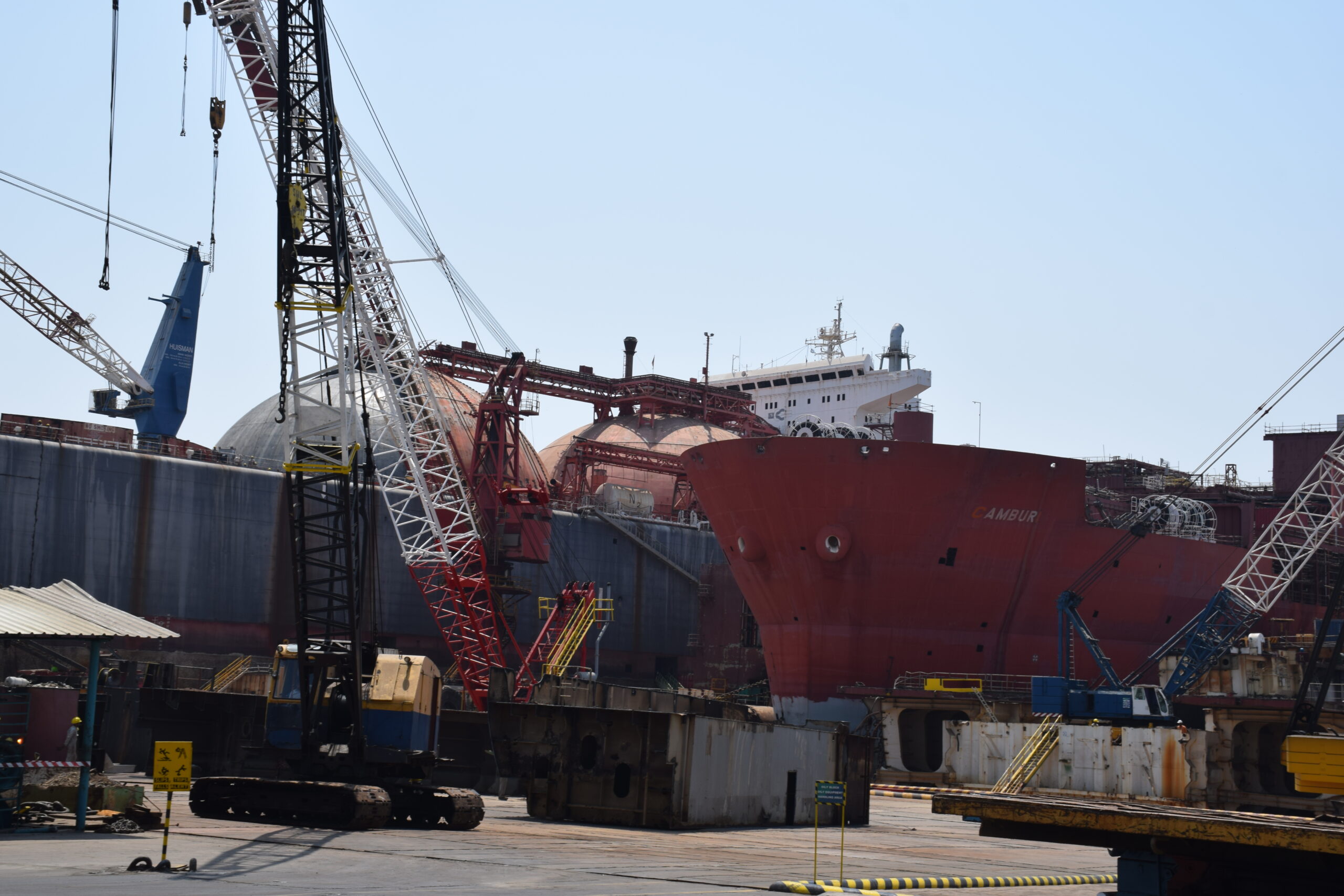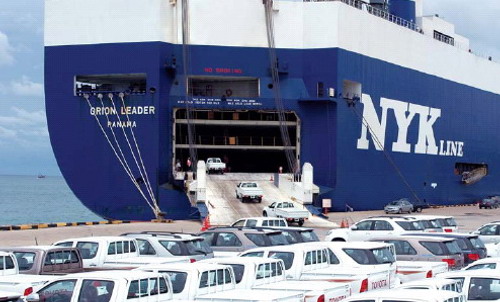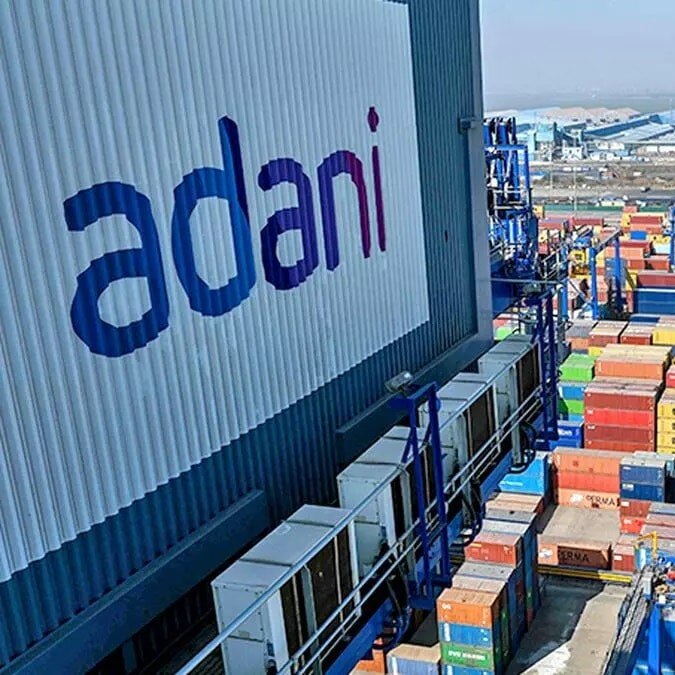2025: A Pivotal Year for Ship Recycling? Hope, Potential, and Challenges Amid Global Turmoil
The global ship recycling industry, often an overlooked but critical aspect of the maritime economy, stands at a crossroads in 2025. With environmental concerns escalating, regulatory pressures tightening, and geopolitical dynamics shifting dramatically, the potential for transformation in ship recycling has never been greater. But will this year bring hope and sustainable progress, or will global challenges hinder advancements?

The Role of Ship Recycling in the Maritime Industry
Ship recycling is essential for managing the lifecycle of the global shipping fleet. When ships reach the end of their operational lives, recycling offers a way to recover valuable materials, reduce waste, and minimize environmental impact. The industry not only provides critical resources like steel but also sustains livelihoods in regions like South Asia, where the bulk of global shipbreaking activities occur.
Yet, ship recycling has long been marred by concerns over unsafe working conditions, environmental degradation, and inadequate regulation. The vast majority of shipbreaking yards are located in countries like India, Bangladesh, and Pakistan, where lax enforcement of international standards has often led to hazardous practices. With the International Maritime Organization (IMO) and global environmental bodies pushing for stricter adherence to the Hong Kong Convention (HKC) for the Safe and Environmentally Sound Recycling of Ships, 2025 could be a decisive year for setting a new trajectory.
Rising Opportunities in 2025
The ship recycling sector is poised to see an uptick in activity this year. A confluence of factors suggests that recycling yards may face unprecedented demand:
- Aging Fleet: The global shipping industry is grappling with an aging fleet, particularly in the bulk carrier and oil tanker segments. Many vessels built in the 1990s and early 2000s are reaching the end of their operational lifespan, creating an influx of ships ready for dismantling.
- Regulatory Push for Green Shipping: Stricter decarbonization goals, including the IMO’s aim to achieve net-zero emissions by 2050, are prompting shipowners to retire older, less efficient vessels. This regulatory environment could catalyze a wave of recycling as companies modernize their fleets with eco-friendly alternatives.
- Economic Incentives: High steel prices, driven by global construction booms, are making ship recycling financially attractive. Recyclers are poised to benefit from a strong demand for scrap materials, which could inject fresh momentum into the industry.
- Technological Advancements: Innovations in recycling methods are paving the way for safer and more efficient processes. Automation, better waste management systems, and advanced dismantling technologies are gradually being adopted, particularly in yards compliant with HKC standards.
Challenges Loom Large
While the potential is immense, the ship recycling industry faces formidable challenges in 2025:
- Geopolitical Tensions: The ongoing war in Eastern Europe and escalating tensions in the South China Sea have disrupted global shipping routes and destabilized markets. Uncertainty surrounding fuel prices and shipping demand is likely to impact ship recycling as well. The war has also increased risks associated with dismantling decommissioned military or dual-use vessels, which often require specialized handling.
- Environmental Concerns: Despite progress, much of the industry remains plagued by unsustainable practices. Beaches in South Asia, where shipbreaking occurs, are often littered with hazardous waste, including asbestos, heavy metals, and oil residues. Environmental groups are demanding stricter enforcement of regulations, but achieving widespread compliance remains a significant hurdle.
- Labor Issues: Shipbreaking continues to be one of the world’s most dangerous jobs. Workers in countries like Bangladesh and India often lack proper protective equipment, face exposure to toxic substances, and endure poor working conditions. Calls for greater accountability and improved safety measures are growing louder, but implementing these changes at scale will take time and resources.
- Regulatory Fragmentation: Although the Hong Kong Convention is a step in the right direction, its adoption has been slow. Only a handful of countries have ratified it, leaving much of the industry unregulated. Meanwhile, the European Union’s Ship Recycling Regulation imposes stricter requirements but applies only to EU-flagged vessels, creating disparities in global standards.
War’s Impact on Ship Recycling
The war in Ukraine and heightened geopolitical tensions have had a profound impact on global shipping, indirectly influencing the ship recycling industry. The conflict has redirected trade routes, increased insurance costs, and forced some older vessels to remain in service longer to meet demand. However, the war has also resulted in a surplus of decommissioned vessels, particularly from navies and government fleets, which could boost recycling activity.
The dismantling of military ships presents unique challenges. These vessels often contain classified materials, hazardous components, and outdated technology, requiring specialized expertise for safe recycling. If managed correctly, this could provide an opportunity for the industry to diversify and develop higher standards.
A Path Forward: Collaboration and Innovation
For 2025 to be a year of progress, stakeholders across the maritime industry must collaborate to address systemic issues in ship recycling. Key areas of focus should include:
- Regulatory Alignment: Global efforts must prioritize the ratification and enforcement of the Hong Kong Convention. Harmonizing standards across jurisdictions will create a level playing field and incentivize better practices.
- Investment in Green Yards: Shipowners and governments should invest in modernizing recycling facilities, particularly in developing countries. Upgraded infrastructure, combined with training programs for workers, can enhance safety and environmental performance.
- Public-Private Partnerships: Collaborative initiatives between governments, NGOs, and the private sector can accelerate the adoption of sustainable practices. Funding mechanisms, such as green loans or subsidies, could help smaller yards transition to compliance with international standards.
- Technology Transfer: Advanced nations with state-of-the-art recycling capabilities should share their expertise and technology with developing countries. Knowledge transfer can drive innovation and help raise the global baseline for safety and sustainability.
- Transparency and Accountability: Enhanced tracking systems, such as digital ship recycling plans and blockchain-based certification, can improve transparency. Shipowners must take greater responsibility for ensuring their vessels are recycled responsibly, regardless of where the dismantling occurs.
The Outlook for 2025
The ship recycling industry in 2025 is teetering between opportunity and adversity. The year holds immense promise for advancing sustainability and safety, driven by market dynamics, regulatory shifts, and technological progress. However, realizing this potential will require a concerted effort to overcome longstanding challenges, including environmental degradation, worker exploitation, and geopolitical instability.
The question remains: will the industry seize the moment to transform itself, or will it remain bogged down by inertia and fragmented regulation? The decisions made this year could have far-reaching implications, shaping the future of ship recycling for decades to come.
Author: shipping inbox
shipping and maritime related web portal








